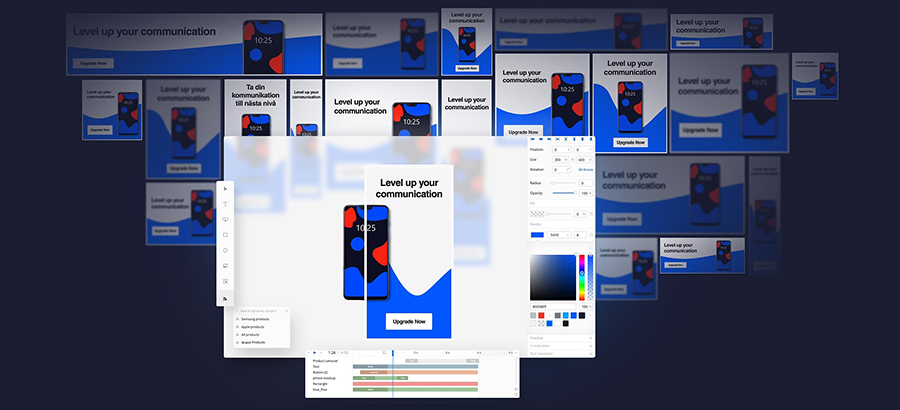
Five Martech Trends for 2023
2023 is well and truly on, and it’s clear that the MarTech landscape is rapidly evolving. The rise of new technologies, changing consumer behaviours, and increasing competition drives marketers to be more innovative and creative than ever before.
In this blog post, we’ll explore some of the top MarTech trends for 2023, and how marketers can stay ahead of the game.
AI and Machine Learning
A key trend for 2023 is the increasing use of AI and machine learning in MarTech. These technologies are already being used to automate routine tasks, such as email marketing and lead scoring, but their potential goes much further.
In the coming years, we can expect to see AI and machine learning being used to personalise content, optimise ad campaigns, and even generate new marketing ideas. Research from Gartner shows 84% of digital marketing leaders believe using AI/ML enhances the marketing function’s ability to deliver real-time, personalised customer experiences. By analysing vast amounts of data, these technologies can identify patterns and insights impossible for humans to spot.
The Rise of No-Code In-House Creators
One of the biggest trends in MarTech for 2023 is the continued rise of no-code platforms. According to a study by Gartner, by 2025, 70% of newly built enterprise apps will employ low-code or no-code technology. These platforms enable marketers to create and launch campaigns without the need for any coding skills or technical expertise. This is a game-changer for in-house teams, who can now develop and launch campaigns faster and more efficiently than ever before.
Using no-code platforms allows marketers to experiment with new campaign ideas, test different strategies, and quickly pivot based on results generated from these tests. This agility is critical in today’s fast-paced marketing landscape, where the ability to react quickly to changes in user behaviours or market conditions can play a key role in the success and failure of campaigns.
Personalisation
The increased requirement for marketers to appeal to as many people as possible from an individual perspective in recent years has increased the importance of personalisation in the marketing stack. However, in 2023 it will become even more important as consumers continue their scepticism towards traditional advertising formats and techniques. Having a strategy to ensure personalisation in all communications is one of the most effective ways to connect with audiences and build trust. According to Accenture, 91% of consumers say they are more likely to shop with brands that provide offers and recommendations that are relevant to them.
Personalisation can take many forms, and is by no means one size fits all, but depending on your product or business offering, what personalisation means to your business may range from tailored email campaigns to personalised website experiences for different audiences or user intent. The essential thing to understand is how you can leverage the data available to you in understanding the needs of your audience as well as their preferences, using that information to deliver content that speaks to them on a personal level.
Data Privacy and Security
Finally, data privacy and security will continue to be a major concern for marketers in 2023. With the increasing use of data in marketing, it’s more important than ever to ensure that consumer data is being collected and used ethically and securely.
As we discussed in a recent blog post, third-party cookies have been a hot topic in the digital ad industry since Google announced their intention to phase out third-party cookies in Chrome by 2023, responding to the increasing demand for privacy online. This change to one of the most utilised marketing platforms leaves marketers with a limited amount of time to adapt, but it is important that they do so in order to avoid being left behind by their competitors or worse consumers.
Marketers need to be transparent about the data they’re collecting and how it’s being used, as well as ensuring that they’re complying with all relevant data privacy regulations. This includes measures such as data encryption, access controls, and regular security audits.
The “Rise” of Ecosystems and Communities
Instead of pitting marketing cloud suites against best-of-breed point solutions, the future lies in a hybrid approach that combines the stability of open platforms with specialised third-party apps integrated into large ecosystems. Scott Brinker, VP of Hubspot, accurately predicts the development of app ecosystems centred around core technologies. Today, even niche software tools provide libraries of apps that connect to their services, which offer a host of advantages. Teams can move beyond the “suite versus best-of-breed” mentality and focus on expanding functionalities through partner ecosystems. As MarTech tools become increasingly surrounded by ecosystems, the ability to customise services multiplies. According to Brinker, this ability to leverage second-party data from these partnerships will unlock numerous marketing and MarTech opportunities in the coming year.
Conclusion
In conclusion, MarTech is a rapidly evolving landscape, and marketers need to stay ahead of the curve to succeed. In 2023, we can expect to see the rise of no-code platforms, increased use of AI and machine learning, a focus on personalisation, and a continued emphasis on data privacy and security. By embracing these trends and staying agile, marketers can thrive in the years ahead.
Share this article







